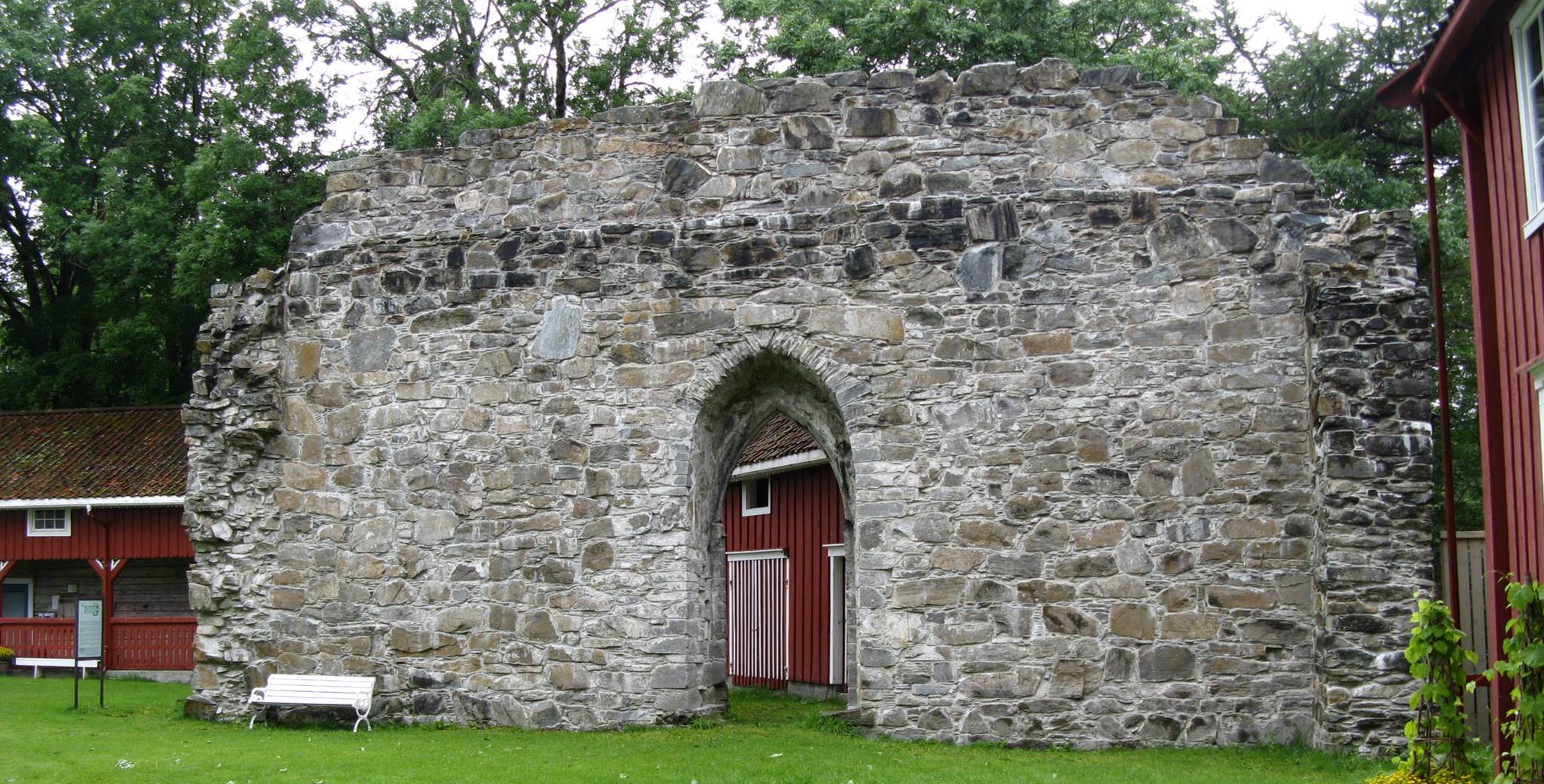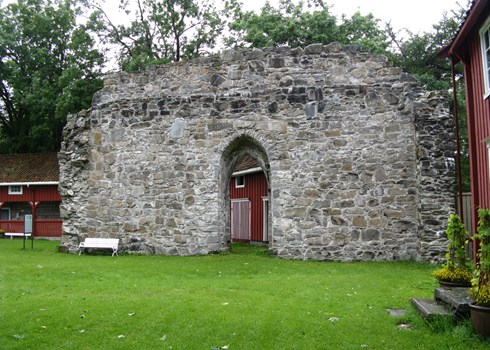

Rissa, Trøndelag
Owned by the National Trust of Norway since 1888.
The ruins and farm bear witness to a long history. The impressive white main building of Rein farm (1866), with its characteristic twin towers, is surrounded by traces of a long and interesting history. The long lines are drawn from the time of the events and persons described in the medieval saga literature until the farm became the property of the Horneman family in 1704. Today, the tenth generation of this family owns and runs the farm. The church ruins show that it was built in two stages. The original church, which probably predates the convent church, may have been a private chapel for the big farm of Rein.
Church with a Greek cross plan. The church had a floor plan that sets it apart from other medieval churches in Norway, as it was built in a Greek cross plan (with four arms of equal length). The tall tower in the middle could be seen from a great distance in its prominent location on Reinshaugen hill. The remains of three arms with an original portal, a spiral staircase and two side chapels are preserved. The western arm of the Greek cross plan was at some point replaced by a large nave in early Gothic style, and the remains of the western wall still stand. In addition to the church, the convent complex comprised several other buildings, but none have survived.
The grave of dowager queen Margaret? Duke Skule's sister Sigrid became the convent’s first abbess. Skule's daughter Margaret, wife of King Haakon Haakonsson, spent her final years as dowager queen here, and is perhaps buried under the chancel. Archaeological excavations conducted in the 1860s located two graves in the middle of the chancel. The convent was closed down in 1537 after the Reformation.
Things to do in the area. Reinskloster is today known for its production of organic ice cream, beer and aquavit. The products are not sold at the farm, but a list of retailers show where they can be purchased. The Fosen peninsula offers a wide range of experiences for children and adults alike, including the coastal heritage museum Kystens Arv, exciting coastal experiences, farm tourism and cultural heritage sites. The National Trust of Norway’s many properties in this part of Trøndelag are also well worth a visit: Tautra monastery, Munkeby monastery, the stone byre at Røstad, Steinvikholm castle, Logtun church, Hustad church, Sakshaug old church and the Saint Olav monument at Stiklestad.
Sources: En reise gjennom norsk byggekunst, ed. Terje Forseth. National Trust of Norway 1994 / Klosterruinene på Rein, fact sheet, the Directorate for Cultural Heritage’s ruins project. / www.reinskloster.no
Opening hours
- The ruins of the Reins monastery is an open outdoor destination, free to visit.
- Guided tours for groups by appointment. See contact information.
Ticket prices
Visit us
Klosterveien 1957100 Rissa
Contact us
- Epost: dentronderske@fortidsminneforeningen.no
- Tlf: 73 85 55 60


